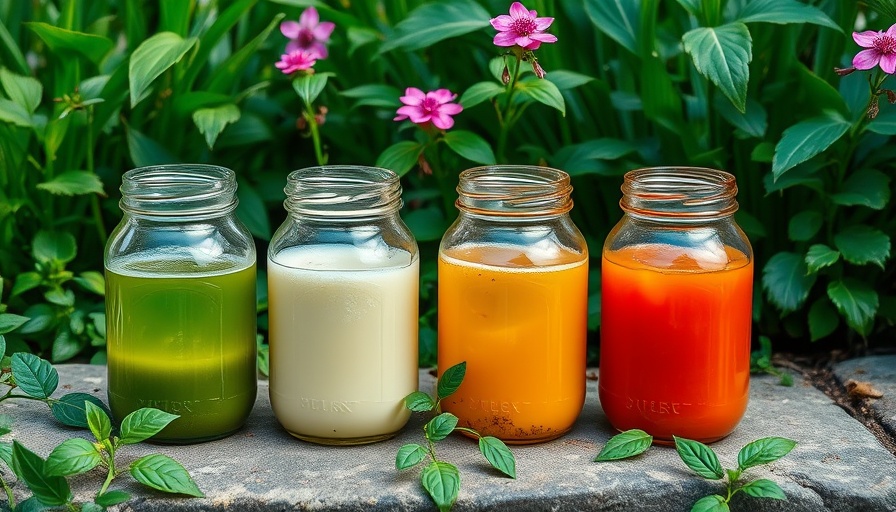
The Secret to Thriving Plants: The Case for Organic Fertilizers
As any dedicated gardener knows, creating a lush and bountiful garden goes beyond just planting seeds and waiting for them to grow. The foundation of healthy plant life lies in nurturing the soil and providing the right nutrients. Today, we're diving deep into the world of organic fertilizers—an often-overlooked key to achieving a thriving garden.
Understanding Organic versus Synthetic Fertilizers
When considering fertilizers, gardeners frequently encounter the debate between natural and synthetic options. Organic fertilizers, derived from natural sources like plant matter and animal byproducts, offer a gentler approach. They support the ecosystem of the soil, encouraging beneficial microorganisms and worms that help break down nutrients into forms that are accessible for plants.
In contrast, synthetic fertilizers can precipitate rapid nutrient uptake—an appealing prospect until the consequences come to bear: fertilizer burn, nutrient leaching, and environmental degradation. Over time, relying solely on synthetic options can rob the soil of life, making it less hospitable for plants in the long run.
How to Make Your Own Organic Fertilizer
Creating your own organic fertilizer can be incredibly rewarding. Not only does it save you money, but it also fosters a deeper connection with your gardening efforts. Here are five methods to concoct nutrient-rich fertilizers right from your kitchen or garden:
- Compost Tea: Soak compost in water for a few days to extract nutrients, resulting in a nutrient-packed liquid. It’s perfect for watering your plants.
- Banana Peel Fertilizer: Rich in potassium, soak banana peels in water for a week or chop them up and bury them directly in the soil.
- Eggshell Calcium Boost: Crushed eggshells are excellent for fortifying soil with calcium. Store them in a jar, dry them out, and blend to a fine powder before mixing into your garden soil.
- Alfalfa Tea: Soak alfalfa meal in water; the resulting tea is excellent for seedlings, providing nitrogen and other nutrients as your blooms grow.
- Fish Emulsion: Mix fish waste with water to create a potent fertilizer rich in essential nutrients. Use sparingly to avoid overpowering your plants.
The Economic and Ecological Benefits
Transitioning to organic gardening practices, particularly the use of organic fertilizers, presents economic and ecological advantages. Home gardeners can save money by utilizing kitchen scraps and common household ingredients to create their own fertilizers. Plus, these practices contribute to sustainable gardening, which ultimately fosters healthier landscapes and ecosystems.
In an age when eco-consciousness is paramount, ensuring the health of our gardens through organic means supports broader environmental goals, including reduced chemical runoff and enhanced biodiversity. By choosing organic fertilizers, you're not just caring for your plants but taking part in a global movement toward sustainability.
Your Garden's Nutrient Needs: What to Consider
Grappling with what type of fertilizer to apply? By understanding your garden's nutrient needs, you can tailor your approach. Monitoring pH levels and soil moisture will direct you towards precisely what your plants require. Remember, over-fertilization can waste resources and even harm plants in the long run. Always aim for balance and moderation.
Growing Community and Connection
Engaging in organic gardening doesn't only benefit your garden; it builds community too. Local gardening groups often share tips, seeds, and organic recipes, reinforcing the value of unity in nurturing the earth together. Consider attending local farmer's markets or joining a community garden initiative to exchange knowledge and foster connections with neighbors who share your passion for gardening.
Conclusion: Embrace Organic Gardening for a Flourishing Future
If you’re keen on creating a bountiful garden, it's time to embrace yourself as both a creator and nurturer by incorporating organic gardening practices. Try formulating your own homemade fertilizers and witness firsthand the benefits they provide, not just to your plants, but to the broader environment. The richness of organic gardening transcends mere aesthetics by nurturing the very ecosystem we inhabit.
Are you ready to embark on this flourishing journey? Let’s get growing!
 Add Row
Add Row  Add
Add 




Write A Comment